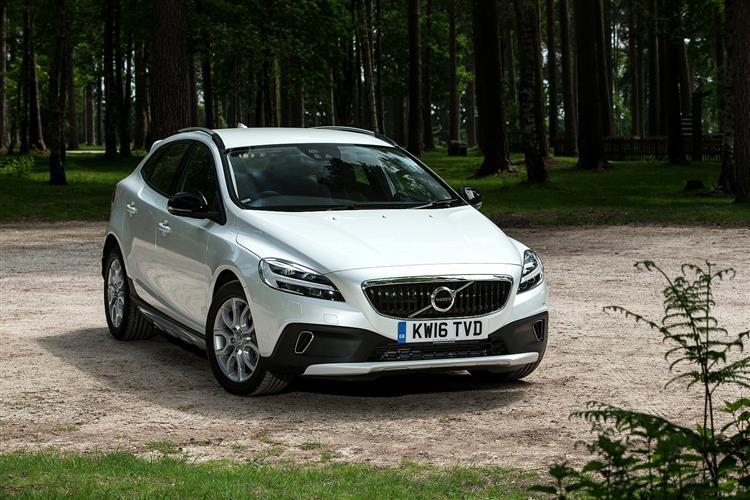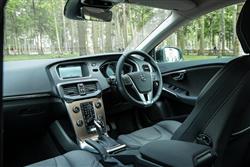CROSS PURPOSES (some text hidden) --NONE--
By Jonathan Crouch
Introductionword count: 86
Volvo's V40 Cross Country model made a play for the growing Qashqai-class Crossover market. It was originally launched in 2012 but is examined here in the improved form that debuted in 2016. It offers an alternative perhaps, to that Audi Q3, Mercedes GLA or BMW X1 from the 2016-2020 era you might have been thinking about. Though the changes over a standard V40 may be slight, you do get a premium feel, class-leading efficiency - and the option of 4WD at the top of the range.
Modelsword count: 7
5dr Hatchback (2.0 petrol / 2.0 Diesel)
Historyword count: 160
Qashqai-style Crossovers now fill our roads, family hatchbacks with a touch of the Outback about them. But is it really necessary for a brand to design a product from scratch in order to compete in this growing market niche? Back in 2014, Volvo reckoned not, bringing us the car we're looking at here, their V40 Cross Country model. It was improved in 2016 and it's that later 2016-2020-era model we look at here. If the ordinary V40 didn't exist, you might see this as a very credible kind of compact crossover. As it is, we know that this is a V40 in a pair of hiking boots - though unlike some supposedly 'proper' Qashqai-class models, it did offer the top-of-the-range option of 4WD. From Volvo's perspective, there's everything here that you need in a compact Qashqai-class Crossover - and nothing you don't. And the 'everything you need' bit from 2016 onwards included class-leadingly efficient 2.0-litre petrol and diesel Drive-E engines.
What You Getword count: 327
The V40 Cross Country variant offered a more outdoorsy look delivered courtesy of silver roof rails, side scuff plates and glossy black door mirrors. Otherwise, the look is much as with any other V40 from this era. The safer a car is, the safer will be its approach to exterior design. That was once true of small Volvos - but it isn't any more. In fact, it's precisely because this V40 is good in an accident that it looks so smart. We'll explain. Almost all cars have relatively high bonnet lines, so as to leave an under-bonnet void to meet pedestrian impact legislation. But, thanks to a unique under-bonnet airbag, this car doesn't need to allow for that, so its bonnet line can be much lower, part of a lean, wide coupe-like stance in a shape very slightly longer and wider than rival BMW 1 Series or Audi A3 models. In short, it's all pleasantly different, an observation equally applicable in the cabin. The inside of this car needed to be good if sales were to be stolen from the likes of the Mercedes A-Class and the Audi A3, a tough assignment tackled with an unpretentious 'Designed Around You' philosophy. The idea was that, like IKEA furniture, this cabin should be typically Scandinavian, comfortable, simple, intuitive and visually pleasing. And broadly it is. Courtesy of a curve on the doorsill, access into the back isn't quite as easy as with some rivals, but once you're inside, leg, shoulder and kneeroom are quite good for two adults, courtesy of the way that the seats were angled slightly inwards to give rear occupants more space and a better view forward. And luggage room? Overall, the total space provided is significantly more than you'd get in a Ford Focus, about the same as you'd get in a more comparable Mercedes A-Class and about 10% less than you'd get in rivals like Audi's A3 and BMW's 1 Series from this era.
To see the full road test text contact us on 0330 0020 227
Pictures (high res disabled)

.jpg)
|
.jpg)
|
.jpg)
| |||
.jpg)
|
.jpg)
|
.jpg)
| |||
.jpg)
|
.jpg)
|

|
Scoring (subset of scores)
Category: Compact Family Cars
| Performance | |
| Handling | |
| Comfort | |
| Space | |
| Styling, Build, Value, Equipment, Depreciation, Handling, Insurance and Total scores are available with our full data feed. | |



